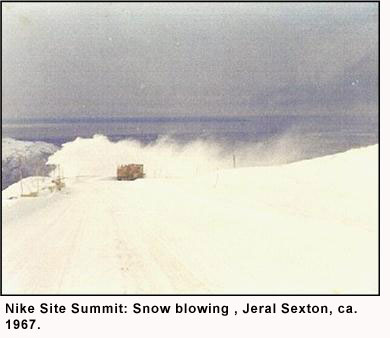
Many men were drafted into military service between 1959 and 1973, but many volunteered -- some simply to serve their country, others to avoid the possibility of getting drafted at a later age. Some volunteered for the career and educational opportunities the military provided.
Nike Soldiers trained at the Army Air Defense School in Fort Bliss, Texas for eight weeks to a year to learn how to operate and maintain the Nike Hercules system before receiving their first assignments. Soldiers assigned to Alaska also had to complete cold-weather training. The rudimentary cold-weather training included camping out in tents in the winter for two to three nights. This was quite a shock to most of the Soldiers, who were from outside of Alaska. They quickly learned how to use their cold-weather gear.
Working at Nike Site Summit
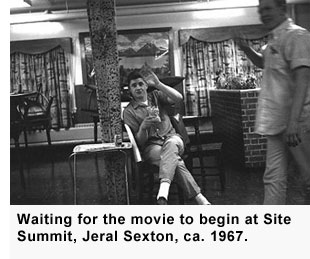
During the 20 years Site Summit was operational (1959-1979), about 125 dedicated soldiers of the 1st Battalion, 43rd Air Defense Artillery in 1972 maintained Site Summit in a constant state of readiness. The site was operational 24 hours a day, 7 days a week, 365 days a year. The men who worked in the Integrated Firing Control area were often called 'scope dopes' because they worked with radars and communications equipment. The men working in the missile launch area were referred to as 'pit rats' because they typically worked underground. The constant state of readiness necessitated that the Soldiers live on-site in barracks. They were free to leave the station in their free time, but elevated readiness status due to exercises or potential threats, lack of transportation, extra duty shifts, and bad weather limited opportunities to get away. A handful of 'brown baggers' also worked at the site; officers who lived in Anchorage or on Fort Richardson, brought their lunch, worked at the site during the day, and went home at night. This had its disadvantages too, though, as daily travel to and from Site Summit was long and treacherous and took a heavy toll on the officers' vehicles. The road was steep and winding and in the winter, visibility and road conditions were often so poor due to blowing snow that vehicles had to caravan directly behind snowplows to get on and off the site.
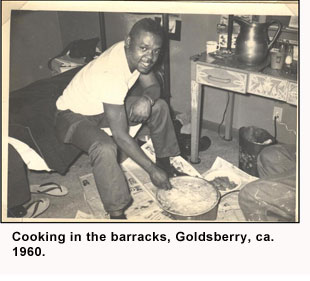
Living at Nike Site Summit
Living in the barracks was much like living in a college dormitory; the Soldiers typically shared rooms. Each Soldier had a bed, a footlocker, and a hanging locker. There was a cook at the site, and the men dined in the mess hall. Some men got Spam, powdered eggs, or other easily-prepared foods from the cook, from the small PX on the station, or during their jaunts into town and cooked them on small hotplates in their rooms. One unique advantage to being in Alaska was that the typical fare could sometimes be supplemented with some local flair; whenever the men shot a moose while hunting or caught some fish, it often went in the station freezer, and the men would get some moose meat or fish from time to time. Another advantage was natural refrigeration. In the winter, many Soldiers stored food and drink outside their windows. This worked great as long as it was not a carbonated beverage.
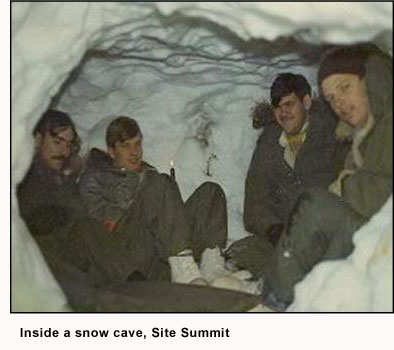
Because the Soldiers lived in barracks, privacy was hard to come by. Everyone generally passed their free time reading, writing letters, listening to music, playing pool, or watching movies. They also spent time outdoors skiing, hunting, fishing, berry picking, and hiking. It was in outdoor activities that many men found some much prized privacy. The winter survival skills the Soldiers learned before starting their duties at Site Summit often came in handy recreationally. These Soldiers built a snow cave where they could comfortably wait out a storm they got caught in while hiking.
Holidays provided a break in routine for the Soldiers. Their families were invited to the site, special meals were prepared in the mess hall, and entertainment was sometimes provided.
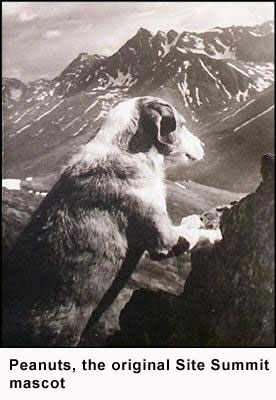
The Mascots
The Soldiers at Site Summit had each other for company, and tried to carve out opportunities for some privacy, but they also enjoyed spending time with their mascots. Mascots were the dogs that lived at the site as pets. The mascots were brought to the site by one Soldier or another and left behind when the soldiers transferred to another duty station. Everyone fed and took care of them. They provided valuable companionship to the Soldiers. Unlike the working dogs, they lived in the barracks, and kept the men company while they performed their duties. They also accompanied the men when they ventured away from the battery for exercise and recreation. Peanuts was the original Site Summit mascot and among the first troops "stationed" at Site Summit. He served until sometime after 1963. Peanut's "job" was to watch the road between the Missile Launch and Storage area to the Battery Control area.